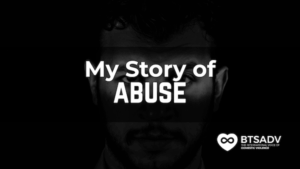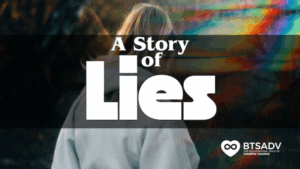By Tara Woodlee
The Abuse You Can’t See
When most people hear the word abuse, they picture bruises, broken bones, or police reports.
But emotional abuse leaves scars that no one can photograph — wounds that take years to find, name, and heal.
In this week’s episode of Through the Eyes of Survivors, I sat down with June Sheehan Berlinger, a nurse, author, and survivor whose story captures what so many live through silently. June reminds us that control doesn’t always start with violence; it starts with subtle words, emotional isolation, and fear disguised as love.
She shared how the constant belittling, manipulation, and walking on eggshells slowly eroded her confidence until she didn’t recognize herself. And like so many survivors, she stayed far longer than she wanted — not because she didn’t see the truth, but because abuse convinces you that you can’t survive without it.
What Emotional Abuse Looks Like
According to the National Coalition Against Domestic Violence, more than 95 % of domestic violence victims experience emotional or psychological abuse in their relationships.
That includes:
-
- Constant criticism or humiliation
-
- Isolation from family or friends
-
- Financial control or “permission-based” living
-
- Gaslighting — twisting reality to make victims doubt their memory or sanity
These behaviors chip away at a survivor’s sense of reality until fear becomes routine.
June described this phase as “the fog of survival” — where your instinct to keep peace overrides your instinct to protect yourself.
From Survivor to Advocate
What makes June’s story powerful isn’t just that she survived — it’s that she turned her pain into a platform for others.
As director of The Women’s Center at Tallahassee Memorial HealthCare for 14 years, she built Florida’s first hospital protocol for domestic violence and created FIRST STEP, a handbook that became a lifeline for victims across the state.
She even served on Florida’s Governor’s Domestic and Sexual Violence Task Force, helping change how professionals see — and respond to — abuse.
June’s message is clear: Healing starts with awareness.
You can’t fix what you won’t name, and you can’t rebuild what you’re still pretending isn’t broken.
Reclaiming Identity After Abuse
For survivors of emotional abuse, healing isn’t about “getting back” to who they were — it’s about rediscovering the person they were always meant to be.
That transformation begins with small steps:
-
- Self-awareness: Recognizing your triggers and patterns of self-blame.
-
- Faith and spirituality: For some, faith becomes the foundation to rebuild trust.
-
- Community: Connecting with other survivors breaks the shame that keeps people isolated.
As June put it in our interview, “You can’t rush healing, but you can choose to begin.”
Listen to the Full Conversation
In this episode of Through the Eyes of Survivors, we explore what emotional abuse feels like from the inside — and how survivors like June rebuild their faith, purpose, and power.
Watch on YouTube:
More Survivor Voices
New “Survivor to Survivor” episodes drop every Friday at 5 PM EST.
Catch “The Narc Diaries” on TikTok every Wednesday and Sunday @BTSADV7.
Join us — because breaking the silence isn’t just for one month. It’s a movement that lives in every survivor who chooses freedom, healing, and hope.
Check These Resources:
Other Resources and Information:
Healing Doesn’t End in October
Domestic Violence Awareness Month may be over, but survivors’ stories don’t stop when the calendar turns.
As we move into the holiday season — a time that can be especially difficult for those leaving or recovering from abuse — your support matters more than ever.
Your donation to Break the Silence Against Domestic Violence funds year-round programs like the Survivor Support Line, virtual retreats, and financial aid for survivors rebuilding their lives.



